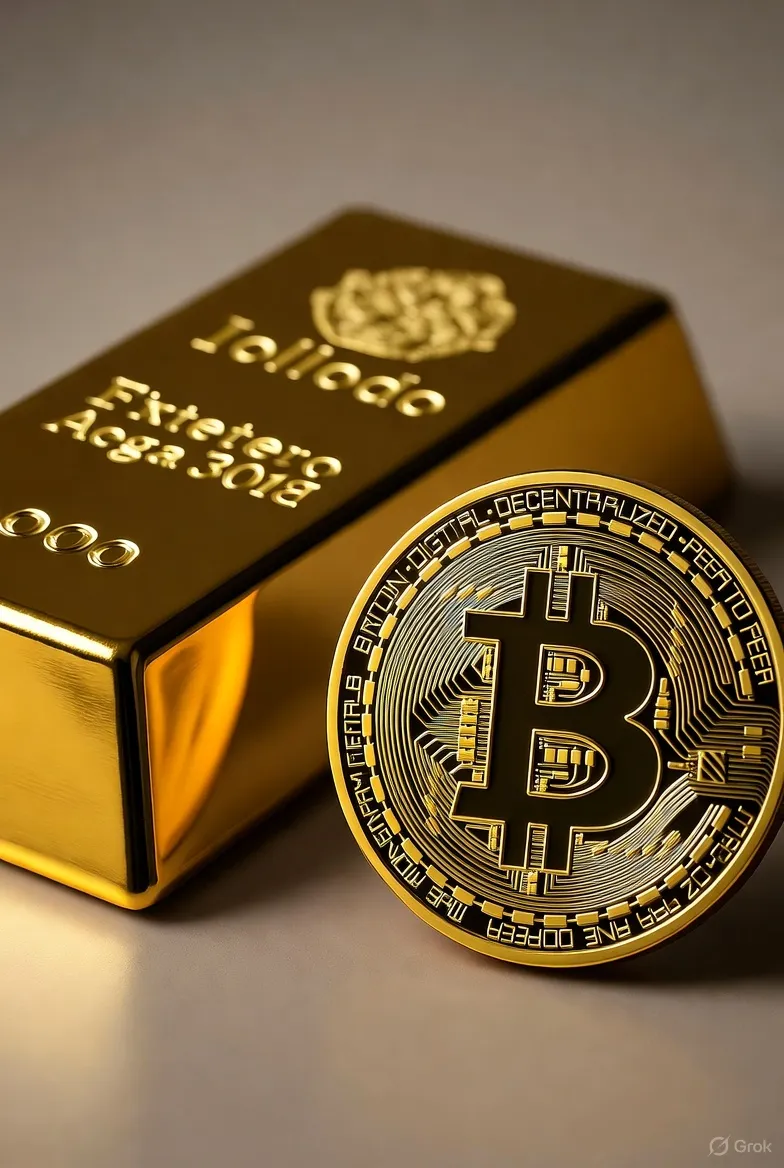Gold as a Historical Safe Haven
For centuries, gold has been regarded by investors as the ultimate safe haven in times of economic and political crises. Thanks to its scarcity and enduring value, gold has consistently served as a store of wealth and a shield against market volatility. History has shown that when fiat currencies collapse or inflation surges, demand for gold rises sharply, making it a cornerstone of both central banks’ reserves and individual investors’ portfolios. However, with the emergence of digital currencies—particularly Bitcoin—the debate around the future of safe havens has been reignited.
The Rise of Bitcoin as a Digital Alternative
Launched in 2009, Bitcoin was introduced as a revolutionary idea aiming to create a decentralized financial system, free from government and banking control. Over time, it has come to be known as “digital gold” due to its similarities with gold, most notably its limited supply. With a hard cap of 21 million coins, Bitcoin is designed to resist inflation in much the same way gold has preserved value. This similarity has led many analysts to view Bitcoin as a modern-day counterpart to gold, especially in a world increasingly dominated by technology and digital economies.
Key Differences Between the Two Assets
Despite the parallels, significant differences separate gold and Bitcoin. Gold is a tangible, physical asset that can be held and stored, while Bitcoin is purely digital, existing on a decentralized blockchain network. Gold tends to maintain relatively stable long-term prices, whereas Bitcoin is notorious for its sharp daily fluctuations—appealing to speculators but unsettling to traditional investors. Moreover, gold’s legitimacy is backed by millennia of global recognition, while Bitcoin still faces hurdles in terms of regulatory acceptance and mainstream adoption.
Crises and the Role of Alternative Assets
During recent global crises such as the COVID-19 pandemic, gold experienced significant price surges as investors sought protection. Yet it wasn’t alone—Bitcoin also reached record highs in 2020 and 2021, signaling a growing global recognition of its potential as a store of value. Major corporations such as Tesla and MicroStrategy even invested in Bitcoin, treating it as part of their reserves—similar to the way central banks accumulate gold. This development strengthened the idea that Bitcoin is beginning to rival gold as a safe-haven asset in the digital age.
Inflation and the Search for Alternatives
Economically, there is a strong connection between inflation and the demand for alternative assets. When fiat currencies lose value due to excessive printing or expansionary monetary policies, investors turn to gold or Bitcoin. Gold maintains its status through its physical stability, while Bitcoin draws power from its technological scarcity and capped supply. These qualities have led some experts to predict that Bitcoin could become a major wealth-preservation tool in the future, particularly among younger, tech-savvy generations.
Official Recognition and Regulatory Challenges
Gold continues to hold a dominant position in official and institutional circles, being a core part of central banks’ and the International Monetary Fund’s reserves. Bitcoin, however, remains controversial: some countries are working to regulate or even ban it, while others, such as El Salvador, have gone as far as adopting it as legal tender. This divide highlights the clash between the traditional financial system and the digital revolution driven by younger investors. As institutional adoption of Bitcoin expands, the balance of power between gold and digital assets may gradually shift.
Dual Investment Strategies
From an investment standpoint, many experts advocate for combining gold and Bitcoin within diversified portfolios. Gold provides stability and protection against traditional risks, while Bitcoin offers high-growth potential over the long run. This blended strategy allows investors to leverage the strengths of both assets: gold as a defensive tool and Bitcoin as an offensive one. Thus, rather than being rivals, gold and Bitcoin can complement each other in shaping modern investment structures.
The Future of Safe Havens
Ultimately, gold represents the historical legacy of safe-haven assets, while Bitcoin symbolizes the digital future of wealth preservation. Both reflect humanity’s ongoing desire to safeguard value against economic uncertainty and market turmoil. While the debate over which asset is superior will continue, each has undeniable advantages. Gold will remain a fixture with its historical and economic weight, while Bitcoin is set to grow as a symbol of financial freedom and technological innovation. For investors, the most effective strategy may be to embrace both, preserving tradition while preparing for the financial future.
